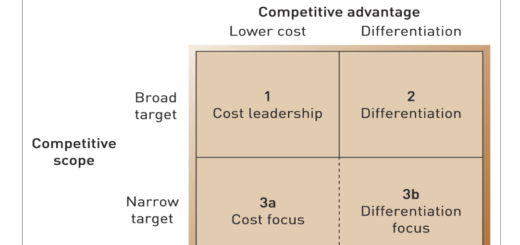Situational Theory of Leadership
- Leaders are diagnosticians and are capable of changing their style.
- The “right” style of leadership style will depend on the degree of the workers’ readiness and commitment, or levels of competence to do the task.
- The leader should assess workers’ needs and adapt his/her style to those needs.
Hersey et al (2001) propose four different styles according to the circumstances: Telling, Selling, Participating, and Delegating.
Kreitner (2001) suggests that deploying these different approaches might be especially relevant in cross-cultural management contexts
Situational theory of leadership (Fiedler, 1971 in Watson and Reissner, 2016)
The Situational Theory of Leadership, also known as Fiedler’s Contingency Model, was developed by Fred Fiedler in the 1960s and published in 1971. This theory suggests that effective leadership depends on the interaction between the leader’s style and the situational variables, such as the nature of the task, the leader’s position power, and the quality of the leader-follower relationship.
Fiedler’s Contingency Model is based on the premise that there is no single best leadership style that works in every situation. Instead, the effectiveness of a leader depends on how well their leadership style matches the demands of the context. Fiedler identified two primary leadership styles:
- Task-oriented leadership: Task-oriented leaders focus on achieving goals, organizing work, and ensuring tasks are completed efficiently. They prioritize results and performance, often providing clear directives and expectations.
- Relationship-oriented leadership: Relationship-oriented leaders prioritize interpersonal relationships, focusing on creating a positive work environment, fostering collaboration, and supporting the well-being of their followers.
To determine the most effective leadership style for a given situation, Fiedler’s Contingency Model considers three situational variables:
- Leader-Member Relations: The degree of trust, respect, and confidence between the leader and their followers. A positive relationship can facilitate cooperation and motivation, while a negative relationship may hinder the leader’s effectiveness.
- Task Structure: The clarity and structure of the tasks the leader is responsible for overseeing. Highly structured tasks have clear goals, procedures, and deadlines, while unstructured tasks are more ambiguous and open-ended.
- Position Power: The extent to which the leader has formal authority, control over resources, and the ability to reward or punish their followers.
Based on these variables, Fiedler’s model suggests that task-oriented leadership is most effective in situations where the leader has strong position power and the tasks are either highly structured or highly unstructured. On the other hand, relationship-oriented leadership is most effective in situations with moderate task structure and moderate position power, as well as when leader-member relations are strong.
In summary, Fiedler’s Situational Theory of Leadership emphasizes the importance of adapting leadership styles to suit the specific demands of the context. By considering the situational variables and selecting the most appropriate leadership style, leaders can maximize their effectiveness and enhance their team’s performance.
Situational theory of leadership (Hersey & Blanchard’s 1988)
Hersey and Blanchard’s Situational Leadership Theory, first introduced in the late 1960s and further developed in 1988, is a widely recognized leadership model that suggests the most effective leadership style depends on the maturity or readiness level of the followers. The theory posits that leaders should adapt their style based on the needs and abilities of their followers to achieve the best outcomes.
Belief: Right leadership style must depend on the level of the followers’ readiness or maturity.
Premise: The leader should assess follower needs and adapt the style to those needs.
Assumption: Leaders are diagnosticians and are capable of changing their style.
The Situational Leadership Theory identifies four main leadership styles:
- Telling (S1): In this style, the leader provides specific instructions and closely supervises the followers. This is most suitable for followers with low maturity or readiness, who lack the skills or confidence to perform the task independently.
- Selling (S2): The leader still provides guidance and direction, but also supports and encourages the followers, engaging in two-way communication. This style is appropriate for followers with some skills and motivation but who may still need guidance and reinforcement.
- Participating (S3): The leader shares decision-making with followers, focusing more on fostering relationships and supporting followers’ emotional needs. This style is best for followers with moderate to high maturity who possess the skills but may need encouragement or reassurance.
- Delegating (S4): The leader provides minimal direction and support, entrusting the responsibility for decision-making and problem-solving to the followers. This style is suitable for followers with high maturity who have both the skills and motivation to work independently.
Hersey and Blanchard’s Situational Leadership Theory also identifies four levels of follower readiness (R1 to R4), ranging from low readiness (R1), where followers lack skills and motivation, to high readiness (R4), where followers are competent and committed.
The key principle of this theory is that effective leaders should adapt their leadership style based on the readiness level of their followers. For instance, a leader may start with a telling style (S1) for a new employee with little experience, and gradually progress to a delegating style (S4) as the employee gains skills and confidence.
In summary, Hersey and Blanchard’s Situational Leadership Theory emphasizes the importance of adapting leadership styles to match the needs and abilities of followers, thereby promoting better performance, growth, and development.





very interesting, but nothing sensible